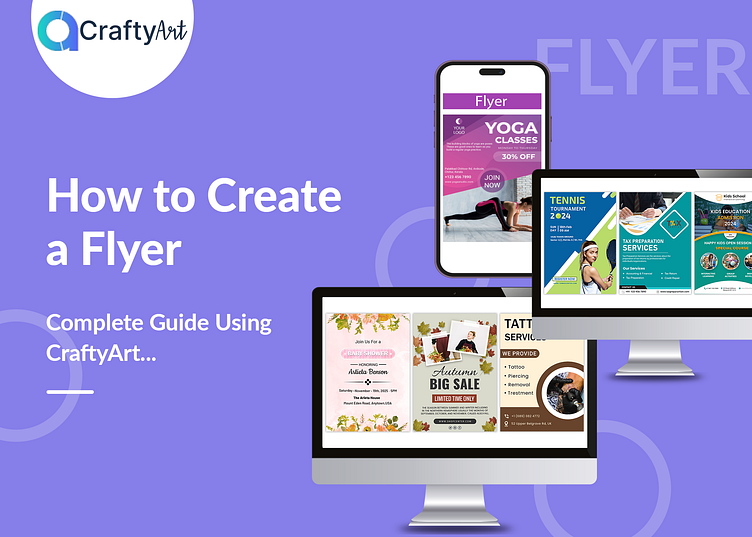How to Create a Flyer: A Comprehensive Guide
In this digital age, where online marketing is prevalent, creating a flyer might seem like an outdated approach. However, flyers remain a valuable and cost-effective tool for businesses and individuals to convey their messages to a local audience. Whether you want to promote a neighborhood event, advertise a garage sale, or market your small business, creating an effective flyer can help you reach your target audience. In this article, we'll provide a step-by-step guide on how to create an eye-catching and informative flyer that grabs the attention of your audience.
1. Define Your Purpose
Before you start designing your flyer, it's essential to know the primary purpose. Is it to promote an event, offer a special discount, or announce something important? Clearly define your objective to tailor the content accordingly.
2. Know Your Audience
Understanding your target audience is key to creating a flyer that resonates with them. Consider their age, interests, and preferences to craft a message that appeals to them.
3. Determine the Key Message
Summarize the primary message you want to convey on your flyer. Keep it concise and to the point.
4. Choose a Flyer Size and Orientation
Select the size and orientation (landscape or portrait) of your flyer based on your content and where you plan to distribute it.
5. Create a Catchy Headline
Your headline should grab attention immediately. It should be clear, engaging, and directly related to your flyer's purpose.
6. Use High-Quality Images
Incorporate visuals that are relevant to your message. High-resolution images will make your flyer more appealing.
8. Write Persuasive Content
Lay out the content in a structured manner. Use headings, subheadings, and bullet points to make it easy for readers to navigate.
8. Write Persuasive Content
Craft compelling text that persuades your audience to take the desired action. Highlight the benefits and solutions you offer.
9. Choose Fonts and Colors Wisely
Select fonts and colors that align with your brand and message. Ensure readability and consistency.
10. Provide Contact Information
Include contact details such as phone numbers, email addresses, and social media links so interested parties can reach out easily.
11. Create a Strong CTA
The call to action is the part of your flyer that tells the reader what to do next. Make it clear and compelling. For example, "Call now for a free consultation."
FAQs
1. Are flyers still effective in the digital age?
Flyers remain effective, especially for local marketing, as they are tangible and can be highly targeted.
2. What size should my flyer be?
The size of your flyer should depend on your content and distribution method. Common sizes include A5 and 8.5" x 11".
3. How do I design a flyer for an event?
Start with a captivating headline, include event details, and use visuals that represent the event's theme.
4. Can I create a flyer on my computer?
Yes, you can use graphic design software or online tools to design a flyer easily.
5. How can I track the effectiveness of my flyer campaign?
You can use unique QR codes, dedicated phone numbers, or custom website landing pages to track responses and gauge effectiveness.







